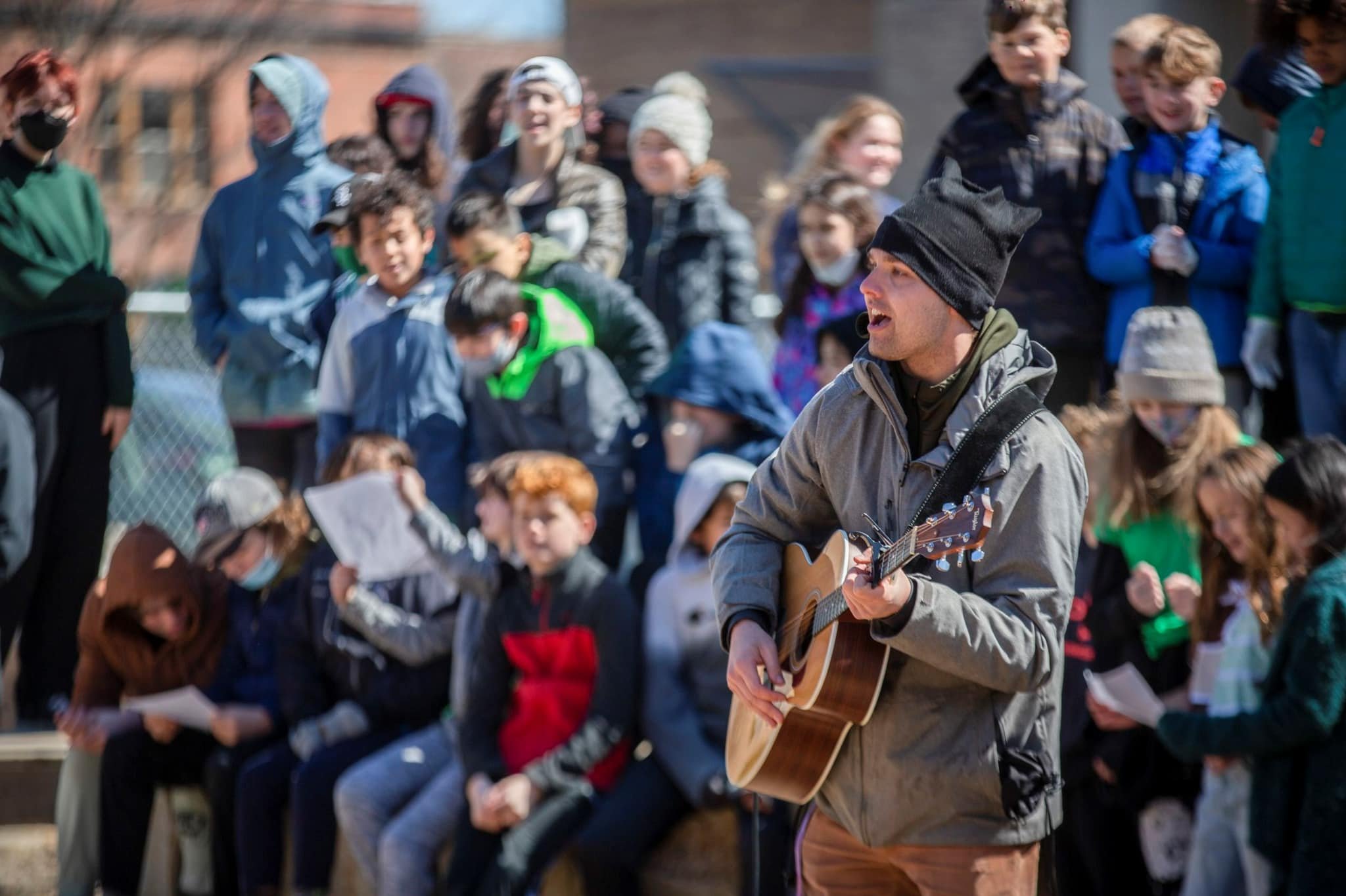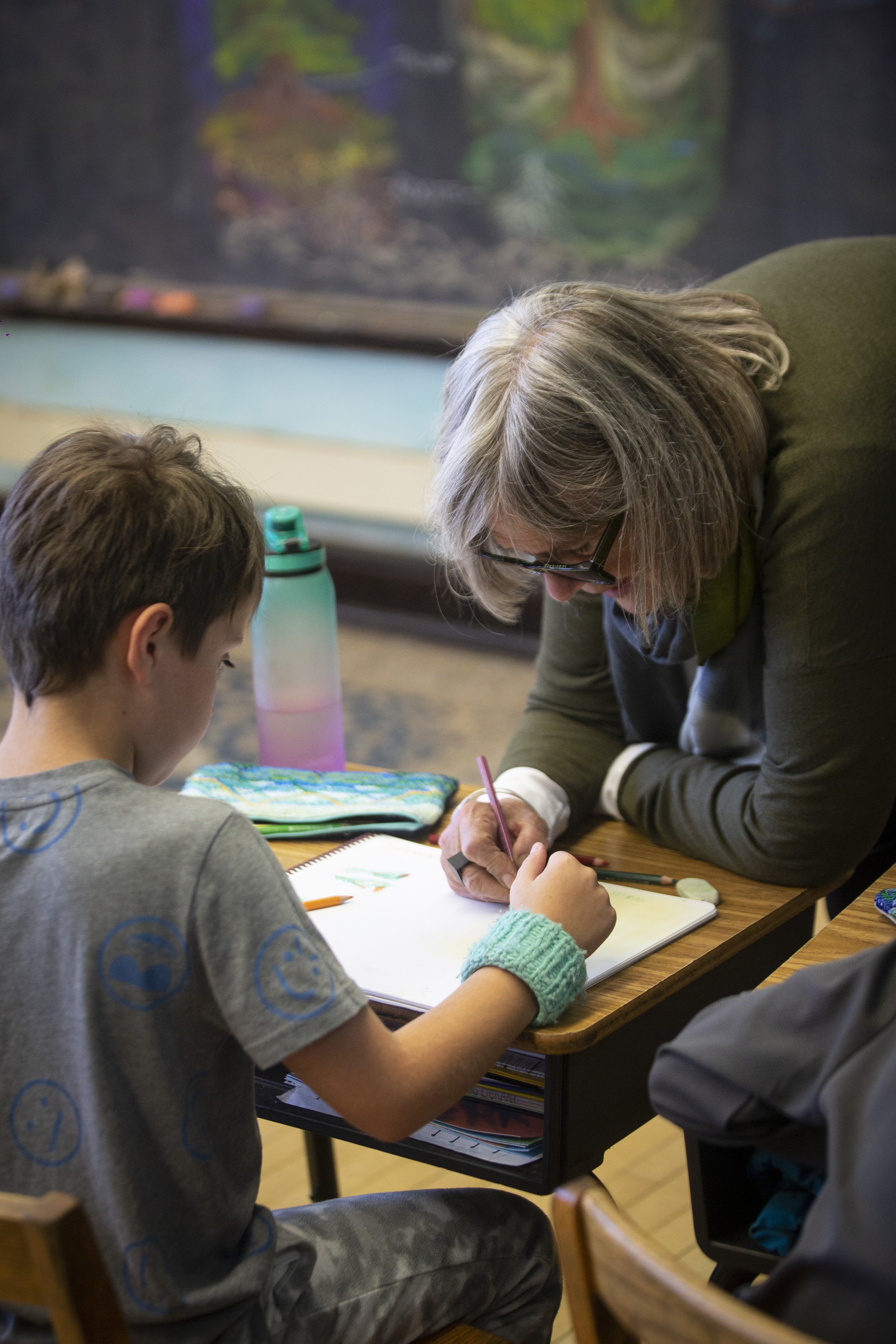
what is waldorf?
Founded in 1919 in Stuttgart, Germany, Waldorf schools were developed as a response to the rising industrialization and homogenization of education. Consequently, Waldorf schools were designed with a reverence for childhood, curiosity, and individuality, committed to inspiring life-long learning in all students and enabling them to fully develop their unique capacities, no matter what they are.
The arts are fully integrated into all academic disciplines for children from preschool through high school in order to enhance and enrich each subject and offer students a variety of points of entry into new or challenging material. Waldorf students are used to being out of their comfort zone, learning to thrive in unfamiliar environments with openness, resilience, and confidence.
At the Chicago Waldorf School, we believe that education is and should be joyful. Our educational model doesn’t rely on testing, it relies on first-hand experience. Mathematics, music, dance, theater, biology, handwork, writing, literature, physics, history - no matter the subject, Waldorf students engage with it head on, physically, creatively, and intellectually in order to grow their understanding of the world, each other, and themselves.
what makes us different?
The first question people ask us is, “What makes Waldorf different from mainstream education?” Below are some of the key differences that set us apart from other schools:
-
Drama, painting, music, drawing, sculpture, handwork arts and others are integrated into the entire academic curriculum, including mathematics, language arts and the sciences. The Waldorf method of education awakens imagination and creative abilities, bringing vitality and wholeness to learning. No other educational movement gives such a central role to the use of multiple intelligences and learning through the arts. Practicing what is to be learned through the ever-renewing arts enlivens all areas of study.
-
The morning lesson consists of a two-hour period at the start of each school day in which the main substance of the day is presented. The subject, it can be Algebra, Greek history, botany or physics, is taught for a three or four week block, then put aside, often to be continued later in the term, or with smaller practice sessions later in the day. This approach gives concentrated, in-depth experience, allows for freshness and enthusiasm, and gives the children time to digest what has been learned before returning to the subject.
-
The teacher creates each lesson presentation and the children illustrate their individual workbooks, recording the substance of their lessons. These books encourage self-expression, understanding of the subject, appreciation for beauty and are an important way to integrate art into every subject. When completed, these books function as handmade textbooks, useful as references for future lessons and projects.
-
There are no computers or screens of any kind in the Lower Grade School classrooms (EC-5th grade). The aim is for students to experience the natural world and the social world through their senses and imaginations. They are shown how to express that learning competently, comprehensively, and artistically. Once our students are taught critical research methods and have established a deep interpersonal responsibility, they are introduced to technology in the classroom. We live in a world full of technology and have found that Waldorf graduates have no difficulty mastering useful technology after they have advanced beyond the middle school classroom.
-
Children will begin their grade school journey with a dedicated, warm-hearted 1st grade teacher. This teacher will continue with these same children through multiple years, sometimes from 1st through 5th, where they would then shift to a middle-school focused faculty member for 6-8th. Though at times, depending on the class and the teacher themselves, this teacher may bring them from 1st all the way through the 8th grade. The practice of Faculty Looping allows time and space for teachers to understand their student’s personalities and unique learning styles while growing and learning with them. It also fosters the development of strong, cooperative relationships between parents and teacher during this multi-year class connection.
-
German and Spanish are both taught starting in first grade. By learning about the many German- and Spanish-speaking cultures of the world, students are given insight into a variety of social models, histories, and traditions. They also learn methods for self-expression unavailable to them in English alone. We believe that this education is vital to the cultivation of global citizens.
-
The language arts are learned in the same way they originated in human history. Humans perceived, then pictured, and, out of the pictures, abstracted signs and symbols. First graders hear stories, draw pictures, and discover the letter in the gesture of the picture. This process is accompanied by phonetic work in songs, poems, and games that help establish a joyful, living experience of language. While different from the current early reader approaches, this time-tested methodology brings lifelong literacy, where early learning levels off. Through the grades, texts taken from the rich humanities curriculum provide material for reading practice.
-
The sciences are taught experientially. The teacher sets up an experiment, calls upon the children to observe, ponder, discuss, then allows them to discover the conclusion. Through this process, rigorous, independent thinking, sound judgment, and creativity are trained.
-
House-building, crafts, and handwork are integral to the curriculum. Students start in kindergarten with the basic skills of shaping wood, baking, planting, and simple sewing projects. In the early grades, children create many functional and colorful objects, such as cases for their wooden flutes or pencil boxes, potholders, puppets, and winter scarves. Through contemporary research, we know that learning to knit and crochet in the early grades leads to motor skills that metamorphose into lively thinking and enhanced intellectual development. Coordination, patience, perseverance, and imagination are also schooled through practical work. Activities such as molding clay and woodworking, house-building, gardening, basketry, shoemaking, included in the curriculum, give the children an understanding of how things come into being and a respect for the creations of others.
-
In a time when music and the arts are not available to all schoolchildren, vocal and instrumental music permeates our curriculum, designed to develop the innate musicality within every child. In early childhood, the joy of song and movement are part of every day. In first grade, children sing and learn to play a simple wooden flute, with both activities practiced daily through the year. In third grade, simple string instruments, such as the lyre, are introduced, while fourth graders have the challenge of learning to play violin, cello, or viola. Music is taught not only for its own sake and the joy it engenders, but also because it brings strong harmonizing and humanizing forces into each individual’s life and the life of the class as a whole – capacities so needed in today’s world.
-
An extraordinary humanities curriculum that starts in second and third grade with legends and mythology takes children through the full sweep of their cultural heritage. Tanakh stories in 3rd grade, Norse mythology in 4th grade, the ancient cultures of India, Egypt, Persia, Mesopotamia an Greece in 5th grade, provide background for the study of history and are presented through excerpts from original texts. By living into these cultures through legends and literature, children retain deep memories from their studies, and gain flexibility and appreciation for the diversity of humankind. By the end of eighth grade, students have journeyed from Greece and Rome to medieval history, the Renaissance, the Reformation, the Age of Exploration, to the present day.

